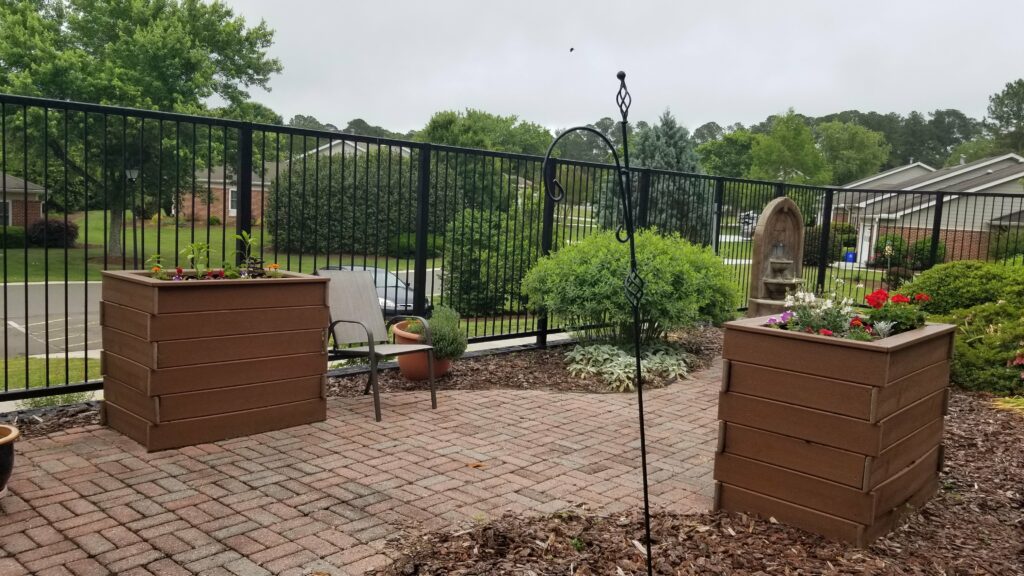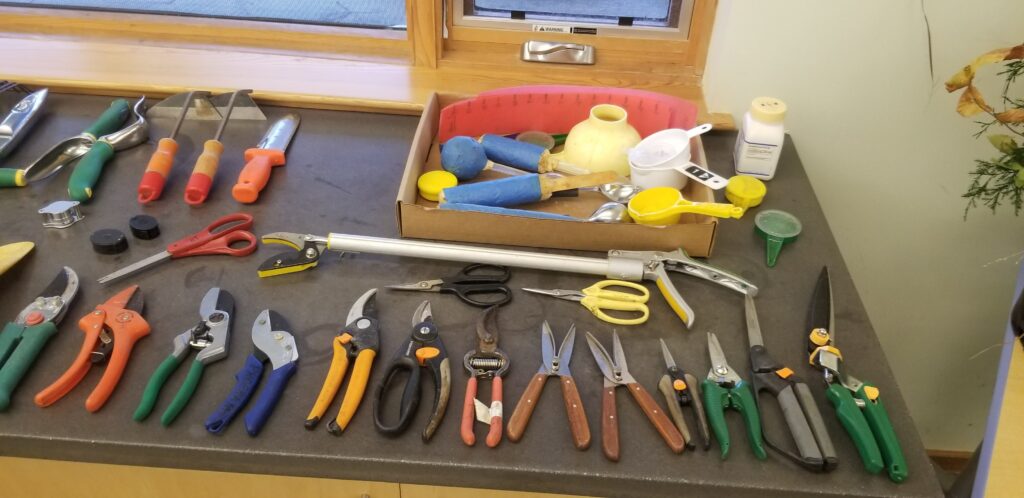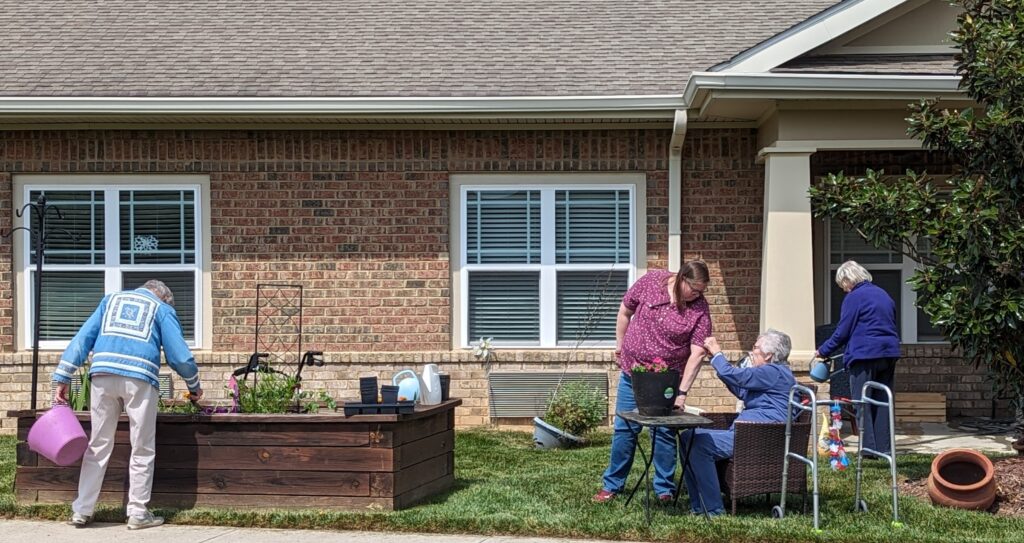Safety in Therapeutic Horticulture
go.ncsu.edu/readext?1075209
en Español / em Português
El inglés es el idioma de control de esta página. En la medida en que haya algún conflicto entre la traducción al inglés y la traducción, el inglés prevalece.
Al hacer clic en el enlace de traducción se activa un servicio de traducción gratuito para convertir la página al español. Al igual que con cualquier traducción por Internet, la conversión no es sensible al contexto y puede que no traduzca el texto en su significado original. NC State Extension no garantiza la exactitud del texto traducido. Por favor, tenga en cuenta que algunas aplicaciones y/o servicios pueden no funcionar como se espera cuando se traducen.
Português
Inglês é o idioma de controle desta página. Na medida que haja algum conflito entre o texto original em Inglês e a tradução, o Inglês prevalece.
Ao clicar no link de tradução, um serviço gratuito de tradução será ativado para converter a página para o Português. Como em qualquer tradução pela internet, a conversão não é sensivel ao contexto e pode não ocorrer a tradução para o significado orginal. O serviço de Extensão da Carolina do Norte (NC State Extension) não garante a exatidão do texto traduzido. Por favor, observe que algumas funções ou serviços podem não funcionar como esperado após a tradução.
English
English is the controlling language of this page. To the extent there is any conflict between the English text and the translation, English controls.
Clicking on the translation link activates a free translation service to convert the page to Spanish. As with any Internet translation, the conversion is not context-sensitive and may not translate the text to its original meaning. NC State Extension does not guarantee the accuracy of the translated text. Please note that some applications and/or services may not function as expected when translated.
Collapse ▲Cultivating Care: Why Safety Must Blossom First in Therapeutic Horticulture
Therapeutic horticulture offers a unique and powerful pathway to healing, growth, and well-being. From reducing stress and improving motor skills to fostering social connection and a sense of purpose, engaging with nature in a structured, guided way yields a rich harvest of benefits. However, like any therapeutic intervention, the success and positive impact of a horticultural program are deeply rooted in one fundamental principle: safety.
Ignoring or downplaying safety planning in a therapeutic horticulture setting isn’t just negligent; it undermines the very trust and security essential for participants to thrive. When individuals feel safe and supported, they are more likely to relax, engage fully, and experience the profound benefits horticulture can offer.
So, how do we ensure our therapeutic gardens are not just beautiful, but also meticulously safe spaces for everyone? It starts with thoughtful, evidence-based planning.
Why Safety is Paramount: More Than Just Avoiding Accidents
Beyond the obvious need to prevent physical injury, robust safety planning in therapeutic horticulture contributes to:
- Psychological Safety: Participants, especially those with vulnerabilities (e.g., cognitive impairments, trauma history, mental health challenges), need to feel emotionally secure. Predictability, non-judgmental communication, clear boundaries, and a sense of control contribute significantly to this.
- Program Effectiveness: When safety measures are in place, facilitators can focus on therapeutic goals rather than managing avoidable risks. Participants, in turn, can concentrate on the activities and their personal growth.
- Ethical Responsibility: As therapeutic horticulture practitioners and facilitators, we have an ethical obligation to protect those in our care.
- Sustainability: A program damaged by preventable incidents will struggle to maintain funding, referrals, and community trust.
Considerations for a Safe Therapeutic Horticulture Program
Key areas to consider when planning for safety:
1. Site Assessment & Garden Design:
- Accessibility: Is the garden truly accessible for all participants, including those using wheelchairs, walkers, or with limited mobility? Are there accommodations for those with low or no vision, sensory sensitivities, or different heights?
- Examples: Wide, firm, non-slip pathways, at least 36-48 inches wide; raised garden beds at varying heights, including seated access; accessible tool storage; gradual ramps instead of stairs. High-contrast colors or textures help those with low vision navigate pathways. Areas away from busy features can offer respite for those with sensory differences. Using vertical plant walls and raised beds can bring plants closer for those who are not able to experience plants at ground level.
- Hazard Identification: What potential dangers exist on the site?
- Examples: Uneven terrain, tripping hazards (hoses, loose pavers), slippery surfaces (moss, wet leaves), sharp edges on structures or tools, presence of toxic or poisonous plants. Ensure clear signage for any unavoidable hazards.
- Sun Protection & Shade: Are there adequate shaded areas for breaks and sensitive skin?
- Examples: Pergolas, shade sails, mature trees, designated indoor or covered break areas. Consider providing sunscreen and hats.
- Water Management: How will water be used and stored safely?
- Examples: Non-slip surfaces around water features; secure covers for rain barrels; clear pathways to water sources to prevent tripping on hoses.
- Pest & Critter Control: How will you manage unwelcome guests safely?
- Examples: Integrated pest management (IPM) strategies to minimize chemical use; secure compost bins to deter rodents; awareness of stinging insects and appropriate responses (e.g., EpiPens if known allergies exist among participants).
2. Plant Selection:
- Non-Toxic or Low-Toxicity Plants: Prioritize plants that are non-toxic or have very low toxicity, especially if working with children, individuals with cognitive impairments, or those who might place objects in their mouths.
- Examples: Avoid highly toxic plants like Foxglove, Oleander, Castor Bean. Instead, select herbs like mint, basil, rosemary; vegetables like lettuce, tomatoes, beans; flowers like sunflowers, marigolds, zinnias.
- Allergen Awareness: Be mindful of common plant allergens (pollen, sap).
- Examples: If working with individuals prone to allergies, choose low-allergen plants or have antihistamines readily available, with medical oversight. Wear gloves when handling plants with irritating sap (e.g., some euphorbias).
- Thorns & Spines: Minimize or carefully manage plants with sharp thorns or spines.
- Examples: If roses are desired, select thornless varieties or position them away from high-traffic areas. Provide thick gloves, instruction, and careful supervision for handling thorny plants.
3. Tool & Equipment Management:
- Appropriate Tools: Provide tools suited to the physical capabilities of participants (e.g., ergonomic handles, lightweight options, adaptive tools).
- Examples: Long-handled tools to reduce bending; easy-grip pruners; trowels with padded handles.
- Storage & Maintenance: Implement a system for secure, organized tool storage and regular maintenance.
- Examples: Lockable shed for sharp tools; routine sharpening and cleaning of tools; regular checks for rust or damage.
- Supervision & Instruction: Never allow unsupervised use of sharp or complex tools. Provide clear, step-by-step instructions on safe tool use. Supervise carefully and prepare participants for scheduled breaks to avoid fatigue or inattentiveness with hazardous equipment.
- Examples: Demonstrating correct pruning techniques; emphasizing the importance of keeping fingers away from blades; one-on-one supervision for new or high-risk tasks.
4. Emergency Preparedness & First Aid:
- First Aid Kit: A well-stocked, easily accessible first aid kit is non-negotiable.
- Examples: Bandages, antiseptic wipes, sterile gauze, medical tape, gloves, sting relief, eye wash solution. Ensure it is regularly checked and replenished.
- Emergency Plan: Develop a clear, written emergency plan for various scenarios, and ensure that all staff and volunteers are well-trained in how to execute the plan.
- Examples: Procedures for medical emergencies (cuts, falls, allergic reactions), severe weather (lightning, extreme heat), and behavioral incidents.
- Contact Information: Maintain up-to-date emergency contact information for all participants; ensure that this is collected at intake.
- Staff Training: Ensure all facilitators are trained in basic first aid and CPR.
- Communication: Have readily available means of communication (e.g., cell phone) in case of emergency.
5. Participant Assessment & Supervision:
- Individual Needs: Understand the specific physical, cognitive, and emotional needs and limitations of each participant.
- Examples: Prior to starting, review participant assessments, discuss individual challenges with their care team, and adapt activities accordingly.
- Appropriate Ratios: Maintain adequate staff-to-participant ratios, especially when working with vulnerable populations or engaging in higher-risk activities.
- Dynamic Risk Assessment: Continuously assess the environment and participants during sessions. Be prepared to adapt activities or intervene if a new risk emerges.
- Hygiene: Emphasize handwashing before and after gardening activities, especially if handling edible plants.
- Examples: Provide accessible handwashing stations or hand sanitizer.
6. Policies & Procedures:
- Documentation: Maintain clear documentation of all safety protocols, training, and incident reports.
- Review & Update: Regularly review and update safety policies and procedures based on new information, incidents, or changes in the program.
- Training: Conduct regular safety training for all staff and volunteers.
- Staffing: A facilitator or volunteer going into a site to work with participants must have a permanent staff member present who knows the participants and can assist with information about allergies, behavior issues, and any other special needs.
Conclusion: A Foundation for Flourishing
Planning for safety in a therapeutic horticulture garden program isn’t an afterthought; it’s the fertile ground upon which all other benefits can grow. By meticulously considering potential risks and proactively implementing preventative measures, we create environments where individuals feel secure, empowered, and truly free to experience the profound healing and joy that only nature can provide.
The NC State/NC Botanical Garden Online Therapeutic Horticulture Certificate program focuses on safety in our TH2: Program Development course, which is a must-have for facilitators planning to practice with vulnerable populations due to the emphasis on safety assessment and planning. This course teaches facilitators how to assess a site and participants for potential safety hazards, and how to make the necessary adjustments to avoid liability so that the program can focus on progress.
Let’s cultivate care, and let safety be the first seed we plant.








